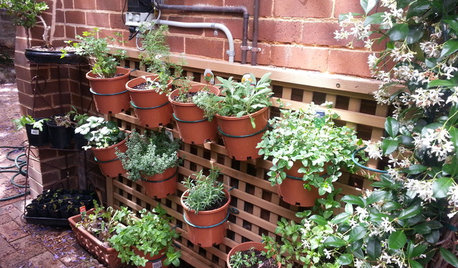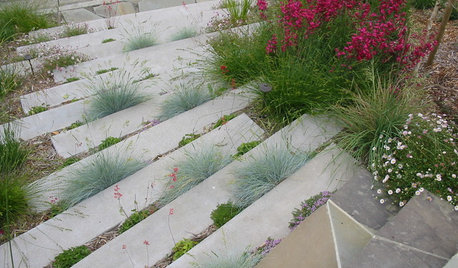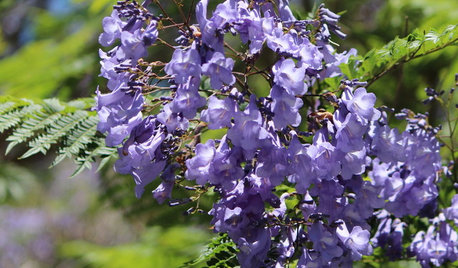Your beans may be the victim of earthworms!
anney
13 years ago
Related Stories

DECORATING GUIDESFrom Queasy Colors to Killer Tables: Your Worst Decorating Mistakes
Houzzers spill the beans about buying blunders, painting problems and DIY disasters
Full Story
FARM YOUR YARD14 Crazy Places to Grow Edibles
Some Houzzers may lack ground for gardening, but they’re never short on imagination
Full Story
EDIBLE GARDENSHouzz Call: What Did You Grow This Summer?
Let’s celebrate the homegrown fruits and vegetables of the season. Post your pictures and tell us about your harvest
Full Story
LIFEThe Wisdom of Kenny Rogers, for Declutterers
No need to gamble on paring-down strategies when the country music legend has already dealt out some winning advice
Full Story
PLANTING IDEASPlant Your Hardscape for Unexpected Green
Nestle greenery among pavers, steps and more for a yard brimming with life and creativity
Full Story
CALIFORNIA GARDENINGCalifornia Gardener's July Checklist
Bite into tree-fresh apricots, inhale delightful garden perfumes and continue planting vegetables for a late-summer harvest
Full Story
MOST POPULAR9 Real Ways You Can Help After a House Fire
Suggestions from someone who lost her home to fire — and experienced the staggering generosity of community
Full Story
LANDSCAPE DESIGNGreat Design Plant: Retreat to the Shade of Hardy Catalpa
Big foliage and a towering height provide a shady respite in summer, but that's not all hardy catalpa offers dedicated gardeners
Full Story
EARTH DAY5 Ideas for a More Earth-Friendly Garden
Consider increasing the size of garden beds, filtering rainwater and using plants to reduce energy use
Full Story
FARM YOUR YARDHow to Grow Vegetables in Containers
Get glorious vegetables and fruits on your patio with a pro’s guidance — including his personal recipe for potting mix
Full StorySponsored






fusion_power
anneyOriginal Author
Related Professionals
West Milford Landscape Architects & Landscape Designers · Forest Acres Landscape Architects & Landscape Designers · Fort Worth Landscape Contractors · Fuquay-Varina Landscape Contractors · Indianapolis Landscape Contractors · Rockville Landscape Contractors · Setauket-East Setauket Landscape Contractors · New Carrollton Landscape Contractors · Northlake Landscape Contractors · Ankeny Decks, Patios & Outdoor Enclosures · Beavercreek Decks, Patios & Outdoor Enclosures · New Albany Decks, Patios & Outdoor Enclosures · New Berlin Decks, Patios & Outdoor Enclosures · Randolph Decks, Patios & Outdoor Enclosures · Sugar Land Decks, Patios & Outdoor Enclosuresfusion_power
anneyOriginal Author
Belgianpup
zeedman Zone 5 Wisconsin